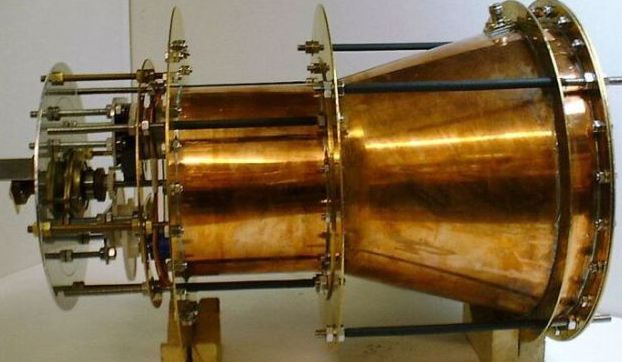Short Bytes: NASA tests have suggested that a new ‘Impossible engine’ that apparently violates the laws of physics may actually work. In the test, little thrust has been reported without the use of any propellant. This may revolutionize the space travel in a true sense.
An ordinary space engine moves forward due to the hot gasses produced by burnt fuel and the conservation of momentum provides a resultant upthrust to the rocket. But in this ‘Impossible’ engine being called the Cannae Drive, there isn’t a single gram of fuel involved. The microwaves produced within the container with the help of electricity are bound to bounce in a specially designed container that creates a difference in radiation pressure and ultimately in thrust.
Also Read: NASA Making the “Warp Drive” – Faster than Light Spaceship
“Test results indicate that the RF (radio frequency) resonant cavity thruster design, which is unique as an electric propulsion device, is producing a force that is not attributable to any classical electromagnetic phenomenon and, therefore, is potentially demonstrating an interaction with the quantum vacuum virtual plasma,” the NASA team wrote in their study, which they presented Wednesday (July 30) at the 50th Joint Propulsion Conference in Cleveland.
Update: NASA confirms that the ‘impossible’ EmDrive thruster really works, after new tests.
For more updates and interesting stories from fossBytes, subscribe to our newsletter. [newsletter_signup_form id=1]







